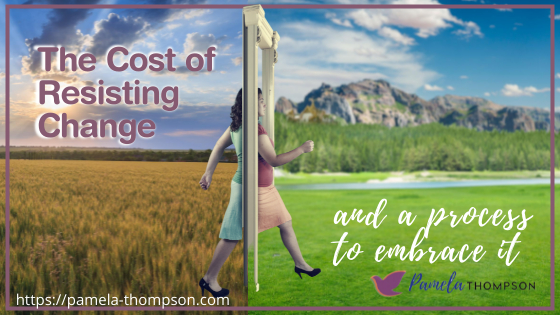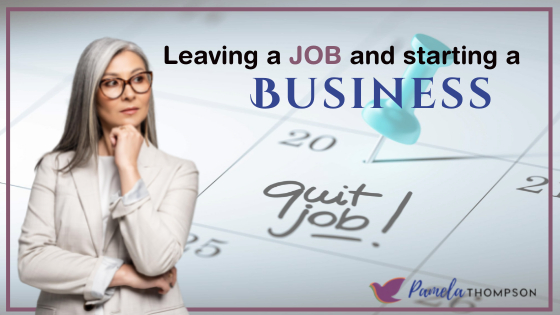
by pam | Mar 26, 2023 | Benefits of being in nature, Embracing Change, Health & Wellbeing, Life Transitions
In the northern hemisphere where I live, spring is a time of reawakening and rebirth. After a long cold winter where the flowers are deep in the ground and the bears are hibernating, spring encourages us to pause, reflect and reawaken to new possibilities. It is a time when buds start to appear on trees, and beautiful daffodils and tulips burst forth to remind us to notice the beauty in our lives and to celebrate new beginnings.
What new beginnings are you celebrating? What new project do you feel brewing within and how are you wanting to share it with the world? Is it a new book, a new offering, a new partnership? How does it make you feel? Get in touch with those feelings and express them in your own way. That could be putting on your best tunes and dancing in your living room, going out for a walk by the ocean or in a nearby park. It could be painting, drawing, or journalling about what’s in your heart. It could be meeting a friend for lunch or a beverage and sharing the new project or partnership you’re excited about.
When you reawaken to new possibilities, how do you feel? You may be noticing you are low energy, and you need to take some time to refill your tank after a long, cold winter. You may be feeling something like a small shoot starting to grow within your heart that you’re not yet ready to share as it is still growing and taking shape.
I encourage you to take some time for you. Go for a walk in nature and notice the beauty that surrounds you. Listen to the birds and notice various signs of spring. Identify five things you are grateful for and really feel that gratefulness in your body. Another activity that is therapeutic and helpful to do at this time of year is to cull – go through your closet and identify clothes that no longer fit or suit your style. Donate these clothes to a charity you care about. If you’re a paper person like me, go through your filing cabinet and shred or burn documents you no longer need.
Perhaps imagine yourself as one of the spring flowers you most appreciate. For me that is the daffodils who remind me of fun, playfulness, and dancing with life.
How are you choosing to dance with life and reawaken to the new possibilities and magic of spring? I welcome your thoughts and comments below.

by pam | Feb 21, 2023 | Benefits of being in nature, Health & Wellbeing, High Achieving Women, Preventing Burnout, Self-Care
I so needed this vacation. My mind was buzzing, and I wanted to escape from the day-to-day responsibilities, to be in the warmth, to speak Spanish, to have little or no structure in each day, to swim and do lengths in the pool.
When I glide through the water I feel such freedom, such strength, such focus on the rhythm of my breath as I do the front crawl for 50, 70 or more lengths. It feels so good! Perhaps I was part fish in a previous life!?
I sit outside in front of our casita in a pueblo magico in Mexico. It is a beautiful fishing village that has a special vibe. The beach is long and wide, and each evening people gather to watch the sun set. When the glowing orb drops into the sea everyone claps. It’s quite an experience. The locals are a mix of ex-pats and Mexicans. There are more and more young people visiting the town and there are also a number of older hippies from North America who live here half the year. It is indeed a special place. I feel like I belong here. My Spanish has come back after about 3 years of not speaking. It flows easily off my tongue until every now and again when I forget a word and have to ask what it is in Spanish.
I love Latin culture. I lived in Colombia in the late 1980s in a small town of 250 houses about 3.5 hours north of Bogota. When I arrived there, I felt like I’d come home. Curious! I gave myself three months to learn Spanish and I did it! Living in a pueblo where hardly anyone speaks English, if you are someone who loves to connect with and communicate with others, is an incentive to learn a language quickly. How fortunate I was to have had that experience!
Over to you, how do you recharge and rejuvenate? What is your favorite place/activity/type of vacation? I welcome your comments below.

by pam | Jan 18, 2023 | Art of Change, Change, Life Transitions
What is the difference between a life change and a life transition? A life change is external and situational; something tangible such as a separation agreement or a “pink slip” when you lose a job. Whereas a life transition is internal and psychological. It is the internal work we do to reorient and readjust ourselves to our new external reality.[1]
Many of us do the life change but do not do what I call the “transition journey work”. When we only do the life change, we often keep repeating the same patterns in our lives and become frustrated and unfulfilled. An example is someone who consistently chooses new positions for the money without understanding and choosing based on their passions and what makes their soul sing. Another is someone who marries three, four or five times and after the initial honeymoon phase ends up in each relationship dealing with the same issues again and again and again, and either stays in the relationship and remains unhappy and unfulfilled or leaves and starts the process again.
The Benefits of doing the Internal Work
When we commit and take the time to do the internal psychological work and switch our beliefs and actions from resisting to embracing change, we no longer perceive change as a threat.
So how do you learn to embrace change and view it as a creative process that opens you up to new possibilities?
By understanding yourself and how you respond to change and why. And having a framework and tools to support you to navigate the journey.
The Art of Change Framework
Based on over 30 years of experience working with people and organizations in volatile environments including conflict zones, I created the “Art of Change Framework”. It is based on the metaphor “life is a dance” and underpinned by the belief that “embracing change is a creative process that opens us up to new possibilities.” Faced with yet another life transition, I decided to apply the “Art of Change Framework” to that transition and document the journey so I could share it with others.
On October 7, 2022, I had hip replacement surgery for my left hip. Due to osteoarthritis, I hardly had any cartilage left in it. That was the first major surgery I’d had.
My Transition Journey: Applying the “Art of Change Framework”
Step 1 – The first step in the “Art of Change Framework” is Shine the Light. This is where you explore how you respond to change and why.
Rate yourself on a scale from 1 to 10 in terms of how you typically respond to change “1” being “scares me to death” and “10” being “I thrive on it”. I rate myself as a “9” as I typically enjoy change and starting and experiencing new things. Perhaps you relate. The next activity is Rate yourself on a scale from 1 to 10 in terms of how you typically respond to a change that is imposed on you and that “comes out of the blue” such as when you receive a lay-off notice or when your partner says they no longer love you. I rate myself as a “6” on this scale.
Step 2 – Choose Your Dance – This is where you choose the transition you want to focus on, as it is preferable to focus on one transition at a time. The transition I’m choosing to focus on is my hip replacement surgery.
Step 3 – Feel the Rhythm and Learn the Steps – In this step you begin doing the work associated with where you are on your transition journey that includes: 1) an ending; 2) a neutral zone; and 3) a new beginning (adapted from the work of William Bridges). Each phase has work associated with it. The work associated with the ending is letting go and identifying lessons learned.
What did I have to let go of as part of my hip replacement surgery?
- Fear I had about “going under the knife”
- The emotions associated with grief; losing my once healthy hip, the one that had enabled me to run, jump, swim, hike … for all those years
- The belief that I had somehow caused my hip cartilage to deteriorate based on all of the track and field, running, and jumping and other sports I have done since my youth
- My independence as I had to let my partner and others support me during my recovery
- The ability to do activities I regularly do such as yoga, walking in nature, swimming, hiking …
- The belief that I’m getting old and as we age our health declines.
Step 4 – Practice, Practice, Practice – This step involves embracing change in your body and continuing to do the work associated with the phase of the transition journey you are in.
As part of the ending phase above, what lessons did I learn from the experience?
- Patience; I had to learn that recuperating from this type of surgery takes time; at least three to six months
- To reach out and ask for support
- To receive and be okay depending on the physical and emotional support of others
- What an amazing caregiver my partner Alan is
- I am challenged to sit still and not be physically active
- This provided me the opportunity to pause, reflect and take stock of my life and identify the many people and things I am grateful for
- I received the insight that as it was my left hip that was replaced, it is representative of my feminine side. Perhaps my new hip will have “amped up” my feminine energy and help me to spend more time in flow and move forward more quickly and easily without driving and striving.
The neutral zone is the phase between the ending and the new beginning. The work of this phase is to get clear and envision the life, relationship, career of your dreams. It provides an opportunity to create and visualize what your new life will look and feel like. This can also be a fearful place as you have “taken the leap”, are entering unknown territory, and you’re not sure what’s on the other side or whether there is a net to catch you.
I could have chosen not to go on the surgical wait list about a year ago, but after encouragement from my partner I said yes.
What will my new life look like? I see myself:
- playing with my grandkids, going up and down slides with them (including water slides), climbing on recreational equipment
- kayaking with my Sweetie, going on motorcycle rides, and feeling comfortable on the back of Alan’s motorbike
- awakening each day feeling whole, healthy and without pain
- hiking and walking with friends and family on a regular basis
- doing yoga three or more times a week
- believing that life continues to be an adventure to be lived to the fullest
Step 5 – Share Your Dance with the World – In this step, due to the positive ways you respond to change, you inspire and are a positive role model for others.
In Conclusion
Applying the “Art of Change Framework” to my recent hip replacement experience reaffirmed for me that the 5-step “Art of Change Framework” and process takes you on a journey that transforms you from resisting and fearing change to moving through personal and professional transitions with greater ease, grace, and playfulness, resulting in increased clarity and confidence.
If the “Art of Change Framework” resonates for you, I encourage you to apply it to your own personal and professional transitions. I welcome your comments and questions below.
[1] Bridges, William, Transitions; Making Sense of Life’s Changes. Cambridge: Da Capo Press, 2004.

by pam | Dec 16, 2022 | Change, Dealing with Uncertainty, Embracing Change, Health & Wellbeing, Leadership
I’ve witnessed the havoc resisting change can wreak on our bodies, our minds, our relationships, our organizations, and our bottom lines. What if instead we learned to embrace change and view it as an opportunity, as a creative process that opens us up to new possibilities. That is the belief on which the “Art of Change Framework” is based. It is aimed at turning change on its head. How do we do that?
The 5-step “Art of Change Framework” guides you through a process where you explore how you typically respond to change and why, identify what you need to let go of in relation to a change to move forward, envision that new life, business, relationship, work of your dreams and create an action plan to move from where you are to where you want to be. It is based on my own work with clients from around the world, my own journey, and is underpinned by evidence from neuroscience, eastern psychology, the health-promoting and healing benefits of the arts and organizational development. It can be used for both personal and professional change, for individuals, and also leaders and their teams.
I invite you to rate yourself on a scale from one to ten in terms of how you typically respond to change and why (one being “scares me to death” and ten being “I thrive on it”). Now rate yourself on the same scale in terms of how you typically respond to a change that is imposed on you; one that you have no control over. Are your ratings different? This can also be used with leaders and their teams about to embark on a change process or in the middle of one. Have each team member openly share their number (understanding that higher numbers are not better, they just are where a person is at), and then invite them to share how best they can be supported through the change.
If interested to learn more, you may access the “Art of Change Framework” here: https://pamela-thompson.com. If you would like to explore how you or your team may apply the framework to personal or professional change, I invite you to book a discovery call with me by emailing pam@creativelivingcommunity.com with Discovery Call in the Subject Line.

by pam | Nov 7, 2022 | Change, Embracing Change, Entrepreneurship, Starting a new business
You may be at a point in your life where you’re feeling so done about having a “real” job.
You may realize you no longer are “juiced” by what you do, or perhaps you never were. Maybe you’ve been taking positions that don’t make your soul sing for the pay and the status.
Perhaps you have a position you enjoy but are working much harder and longer hours than you are being paid for and you’re starting to resent it.
I understand. I’ve been there. I can still remember when I made the decision to leave my well-paying government job with benefits to join a management consulting company on a handshake.
In the early 1990s, I attended a course on “Project Management in a Government Environment” where I ended up facilitating a small group and presenting the findings from our group. After the session, the trainer, who was a partner in a management consulting group, asked where I had learned to facilitate. I said, “I just do it”; I’m trained in therapeutic groups, and I used to do group and family therapy. He replied, “We need to talk.”
Six months later I was in the HR department of the government ministry I had been working for signing my resignation documents. At that time, I was informed I would lose the 3.5 years of contributions the government had made toward my pension plan if I left before the four-year mark. I thought for a moment about this and then realized I wanted to move forward. I was excited about trying something new and getting well paid to do it.
My Dad wondered why I would give up a good position and financial security without a contract. I knew in my heart and gut that this opportunity was the “carrot” I needed to become a consultant. Within six months of joining the consulting group, the partner who had brought me in had a philosophical split with the other two partners and started his own company. He asked me to join him, but I didn’t want to take sides. I started my own business, and the rest is history. Within two years I was making six figures and so enjoying working with my own clients. Since that time, I have launched four consulting and coaching businesses, have learned so much and been paid well. That said I needed the opportunity to work for another consulting group before I took the leap to strike out on my own.
I’m sharing this story and not recommending that you take the leap to start your own business if you feel undervalued, overworked, and perhaps underpaid, before taking into consideration some critical factors.
It is important to have some finances built up before you launch your own business. Contacts in the area you are planning to work in are important. I had co-chaired a national strategy for the federal government that had multiple partners. A number of them hired me as a facilitator and qualitative researcher to do studies for their organizations when I left my position, because they knew and trusted me. If you think you have consulting skills to offer it is helpful to join another consulting group to “learn the ropes”.
What about you? Are you thinking about “taking the leap” and striking out on your own? Perhaps you’ve done it and have some valuable lessons to share. I welcome your thoughts in the comments below.




